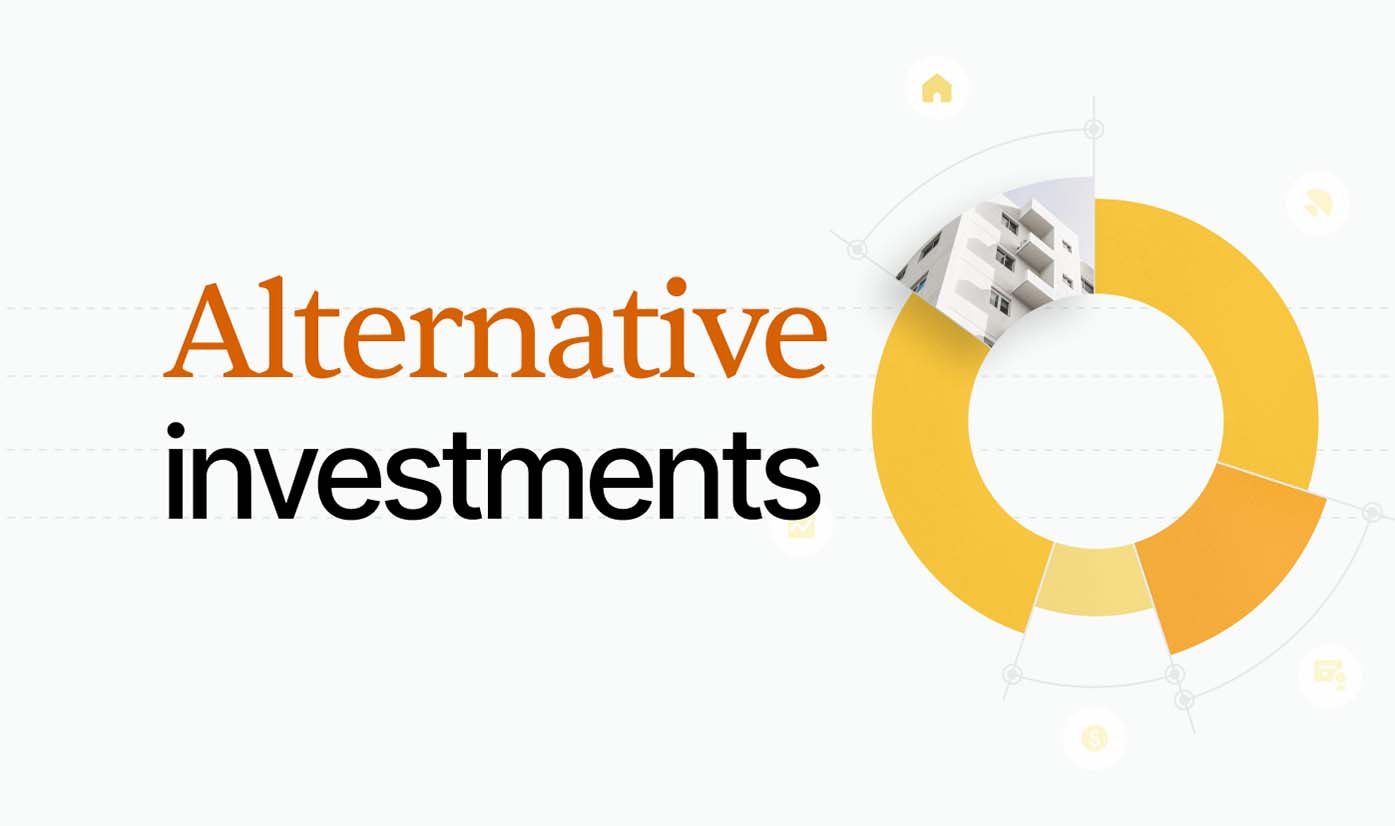In the world of investing, the traditional options of stocks and bonds have long been the go-to choices for most investors. These assets have been staples in building diversified portfolios, but the financial world has evolved, and so have the opportunities for diversifying beyond the typical market options. Enter alternative investments.
Alternative investments are non-traditional asset classes that offer a range of benefits, such as increased diversification, higher potential returns, and even protection against inflation. We’ll explore the world of alternative investments, examine the psychological appeal of diversifying beyond stocks and bonds, and discuss how to incorporate these options into your portfolio.
What Are Alternative Investments?
Alternative investments, at their core, are any investment that doesn’t fall into the traditional asset categories of stocks, bonds, or cash. These include a broad range of assets, such as:
- Real Estate: Residential, commercial, or industrial properties.
- Private Equity: Investments in private companies, venture capital, or private funds.
- Hedge Funds: Funds that employ a range of strategies to generate returns, often outside traditional markets.
- Commodities: Physical goods like gold, oil, agricultural products, or even digital assets like Bitcoin.
- Collectibles: Art, wine, rare cars, and other tangible items with intrinsic value.
- Cryptocurrency: Digital assets like Bitcoin, Ethereum, and other blockchain-based currencies.
While these types of investments can be complex, they offer distinct advantages that may appeal to certain investors seeking to go beyond the usual market fluctuations of stocks and bonds.
Why Consider Alternative Investments?
1. Diversification
One of the most compelling reasons to consider alternative investments is diversification. Diversifying your portfolio means spreading your investments across a variety of asset classes to reduce risk. While stocks and bonds are commonly correlated with each other, alternative assets can behave differently under various market conditions.
For example, real estate tends to appreciate in value even when the stock market is volatile, offering a hedge against equity market downturns. Similarly, commodities like gold often perform well during periods of inflation or geopolitical instability, as they are seen as safe-haven assets.
By including these alternative assets in your portfolio, you’re essentially buying into the notion that not all assets move in the same direction at the same time. This reduces your overall risk and can provide more consistent returns over the long term.
2. Higher Returns Potential
Many alternative investments come with the possibility of higher returns compared to traditional asset classes. For instance, investing in private equity or venture capital can give you access to companies that are not publicly traded but have strong growth potential. Historically, private equity has delivered impressive returns, though these investments are often illiquid and come with higher risks.
Real estate can also offer high returns, particularly if you’re investing in properties in high-growth areas or in undervalued markets. Rental income, combined with property appreciation, can provide a consistent stream of cash flow and long-term capital growth.
On the flip side, these higher returns often come with increased risk, so it’s important to do thorough research and understand the risks involved before diving into these asset classes.
3. Inflation Hedge
Many traditional assets, like cash and bonds, struggle to keep up with inflation over time. On the other hand, some alternative investments, such as real estate and commodities (especially gold), are often seen as reliable hedges against inflation. For instance, when inflation rises, property values tend to increase, and rents can go up as well.
Commodities like oil and precious metals also have a historical track record of performing well during inflationary periods, as their value tends to rise when the purchasing power of currency falls. In uncertain economic climates, these alternative assets can help protect your purchasing power.
4. Access to Unique Markets and Opportunities
Alternative investments often provide access to markets or industries that might not be available through traditional investment vehicles like stocks and bonds. By investing in venture capital or private equity, for example, you can gain exposure to innovative startups and early-stage companies that have the potential to disrupt industries and yield impressive returns.
Similarly, cryptocurrency offers access to the rapidly growing world of digital finance, where blockchain technologies are reshaping how we think about money and transactions. Investing in crypto can offer high potential returns but requires a strong understanding of the volatility and risk involved.
Types of Alternative Investments
1. Real Estate
Real estate is one of the oldest and most stable forms of alternative investment. From single-family homes to commercial properties, real estate can generate both income (through rents) and capital appreciation (through value increase). For investors who want exposure to real estate but don’t have the capital or time to buy and manage properties themselves, Real Estate Investment Trusts (REITs) offer an accessible alternative.
REITs pool investor money to buy, manage, and sell real estate properties. These investments often pay out regular dividends, making them appealing to income-focused investors. Moreover, REITs allow for diversification across different types of properties and geographical locations without requiring a massive upfront investment.

2. Private Equity and Venture Capital
Private equity involves investing in private companies—often businesses that are in the early stages of growth or undergoing restructuring. Venture capital, a subset of private equity, focuses specifically on startups that have high growth potential. These types of investments are typically high-risk, but the potential for returns is considerable.
For investors looking to dive into private equity or venture capital, consider platforms like AngelList, which allow individual investors to participate in early-stage companies. Keep in mind, however, that these investments are usually illiquid, requiring a long-term commitment of at least 5-10 years.
3. Commodities
Commodities include physical goods such as gold, oil, natural gas, and agricultural products. Investing in commodities provides exposure to the global supply and demand forces that drive the prices of these goods. Commodities can be bought directly or through exchange-traded funds (ETFs) and futures contracts.
Gold, in particular, is a popular hedge against inflation and financial market instability. If you’re new to commodities, it’s often best to invest through ETFs like the SPDR Gold Shares ETF (GLD) or iShares Silver Trust (SLV) for easier exposure.
4. Cryptocurrencies
Cryptocurrencies like Bitcoin, Ethereum, and other altcoins have gained significant attention in recent years. These digital assets are based on blockchain technology and are often used as an alternative to traditional currencies or investment vehicles.
While cryptocurrencies offer significant potential for growth, they are notoriously volatile and speculative. If you’re considering cryptocurrencies, it’s wise to only allocate a small portion of your portfolio to this asset class and to invest in well-established coins like Bitcoin and Ethereum, at least initially.
5. Collectibles
If you’re passionate about art, rare wine, vintage cars, or other collectible items, these could be considered alternative investments. Collectibles are unique in that their value often appreciates due to demand from a specific niche market. Websites like Masterworks allow investors to invest in shares of high-value art, while Rally offers investment opportunities in rare cars, sports memorabilia, and other collectibles.
Investing in collectibles requires expertise in the field, as the market can be driven by trends, rarity, and subjective value. However, for investors who have a keen eye for valuable items, collectibles can be a rewarding avenue for growth.
Who Should Consider Alternative Investments?
Alternative investments are not for everyone. These assets tend to be less liquid, more volatile, and more complex than traditional investments. However, they can be a great fit for certain types of investors:
1. High Net-Worth Individuals
High-net-worth individuals often seek alternative investments as a way to preserve and grow their wealth, diversify their portfolios, and protect against inflation. Given their ability to bear more risk, they can afford to take positions in illiquid or high-risk assets like private equity, venture capital, and hedge funds.
2. Experienced Investors
For investors who are comfortable with complexity and willing to do the research, alternative investments can offer higher returns than stocks and bonds. If you’re well-versed in investment strategies and have a long-term perspective, alternatives may provide opportunities for significant growth.
3. Investors Seeking Portfolio Diversification
If you already have a solid foundation of stocks and bonds in your portfolio, alternative investments can help you diversify further. Adding assets that behave differently from traditional equities and bonds can reduce overall portfolio risk and provide steady returns in all market conditions.
How to Integrate Alternative Investments into Your Portfolio
- Start Small: If you’re new to alternatives, start by allocating a small portion of your portfolio—perhaps 5-10%—to these investments. As you gain experience and confidence, you can increase your allocation over time.
- Research and Due Diligence: Whether you’re investing in private equity, real estate, or cryptocurrency, it’s crucial to research thoroughly. Understand the risks, market dynamics, and liquidity constraints associated with each alternative asset before making a decision.
- Use ETFs and Funds: For easy exposure to alternative investments, look into ETFs and mutual funds that focus on real estate, commodities, or private equity. These products allow you to invest in alternative assets without needing direct ownership or management.
- Diversify Across Alternatives: Just as you diversify between stocks and bonds, you should also diversify within your alternative investments. Spread your investments across different asset classes (real estate, commodities, crypto, etc.) to reduce risk and maximize your chances of growth.

The Power of Diversification Through Alternative Investments
Alternative investments offer an exciting opportunity for investors looking to expand beyond the traditional stock and bond markets. They provide the potential for higher returns, enhanced diversification, and a hedge against market volatility and inflation. However, they come with their own set of risks and challenges, so it’s crucial to do your homework and approach these investments with a clear strategy.
By incorporating the right mix of alternatives into your portfolio, you can take advantage of new growth opportunities and better navigate economic uncertainty. Whether you’re into real estate, venture capital, commodities, or cryptocurrencies, there’s an alternative investment out there for you to explore and help build your financial future.
